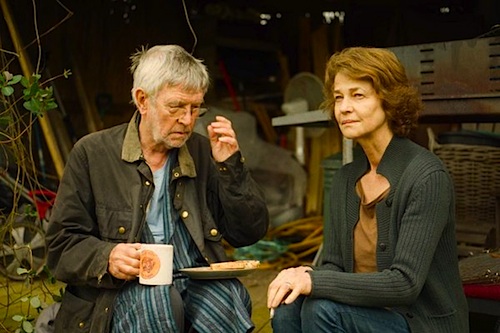By Joe Bendel. There is no crying on Everest. It could cause frostbite. Nobody understands that better than alpinist Um Hong-gil, the first Asian member of the fourteen highest summits club. However, he will return to Everest on a dangerously emotional mission in Lee Seok-hoon’s based-on-a-true-story The Himalayas, which opens this Friday in New York.
They don’t call Um “The Captain” because he can’t climb. He was already knocking on celebrity status before he notched Everest. However, he did not suffer fools on mountains gladly. Rather awkwardly, that initially includes Park Moo-taek and Lee Don-gyoo. When they first meet, the rookie climbers are schlepping the lifeless body of their fellow university expedition member down the Nepalese mountain face. Not a good first impression. Nevertheless, Park and Lee maintain their alpinist ambitions and successfully make the cut for Um’s Kanchenjunga expedition (peak #3). Things are indeed different this time, leading to some serious male bonding and a summit for Um and Park.
For a while, Um and Park become an inseparable tandem on the mountain. However, it all comes to a premature end when the lingering effects of a leg injury force Um into retirement. Now, Park is the Captain, but despite his experience with Um, he is still no match for the erratic wrath of Everest’s “Death Zone.” To provide some closure for Park’s young widow, Choi Su-young, Um and his old teammates will head back to Everest on a longshot recovery mission.
There has been a bountiful harvest of good mountaineering documentaries over the last few years (Meru, The Summit, Beyond the Edge), but narratives have been more hot-or-miss. However, you can count on the Korean film industry to incorporate plenty of tear-jerking into the budding genre. Frankly, the best comparison is the excellent but sadly under-screened Japanese film Climber’s High, but without the acidic portrayal of newsroom politics.
Hwang Jung-min is terrific as the gruff but soulful Um. We can definitely believe he has spent time freezing on mountains and absorbing the wisdom of the Himalayans. He has the right presence and the proper reserve for an old cat like Um. On the flipside, Jung Woo has the right earnestness and preternatural youthfulness for Park. Despite her problematically comedic first appearance, Yung Yu-mi also packs quite a punch in her later scenes as Choi.

Frankly, Yung is not the only one dealing with tonal inconsistencies. However, the first act humor is never as broad or shticky as the mugging that weighed down Lee Seok-hoon’s The Pirates. Most viewers should be able to deal with it, especially if they want to see some extreme mountaineering.
You had better believe Himalayas can be manipulative, but Hwang Jung-min masterfully sells the best of those scenes. Unless you are just a total scat-heel, there is one speech in particular (not even a climatic one) that will have you choked up like it’s Lou Gehrig’s farewell address. That’s pretty good filmmaking and absolutely first-rate work from Hwang. The Film will also make you welcome the unseasonably warm winter. Recommended for fans of Hwang and mountaineering pictures, The Himalayas opens this Friday (1/1) in New York, at the AMC Empire.
LFM GRADE: B
Posted on December 31st, 2015 at 7:38pm.





